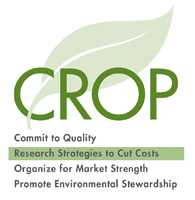Pursuing Profits With Nuts and Winegrapes

There’s a new report out that I thought you growers might be interested in because it answers the one question every fruit and nut grower would like to have answered: How much money will I make if I plant a certain crop? It’s a particularly burning question on land where some other crop’s been pulled, because not many growers like to see their land lie fallow. (Which isn’t always a bad short-term approach, ag economists tell me, but that’s a topic for another day.)
Anyway, this report is titled “Specialty Crop Representative Farm Models: Forecasts, Policy Analysis and International Comparative Studies.” I know that sounds achingly dull. In fact, it sounds so dull that I think the authors might have intended for only other economists to read it. That dovetails with a theory I have that certain occupations, such as lawyers and educators, as well as economists, create their own languages so only they can understand each other. But I digress.
The report includes a “representative” production operation for each of 20 selected specialty crops grown in California, 14 of them fruit and nut crops. The model operations are intended to be the most common types for the crops, in terms of acreage, production and overhead costs, yield, and other features. Based on these models, you’re supposed to be able to project the profitability for operations of different sizes and configurations.
I was immediately intrigued because one of the first tables I came across on page 5 of the 117-page report listed the returns above cash costs a grower could expect for the various crops. (The report can be found online at www.cissc.calpoly.edu/research/FinalReportRepresentativeFarmModels07.pdf) The returns are per-acre based on three-year (2007-2009) averages. The highest listed was winegrapes, at $5,262. That came as no surprise, because the number was based on a vineyard in the North Coast region, specifically a Chardonnay vineyard in Sonoma County. But the crop that yielded the second highest return was a real shocker: Apples.
Not that apple growing can’t be profitable, but this was based on an apple orchard in the northern San Joaquin Valley. When I think high-dollar crops, a Granny Smith orchard near where I live in Modesto is just not the first thing that springs to mind. I would have guessed wrong on the lowest dollar crop too. It was a cherry orchard, also located in the San Joaquin Valley, and it would bring in just $110 per acre. Those numbers just didn’t compute, so I called the report’s lead author, Mechel Peggi, director of Fresno State’s Center for Agricultural Business. Peggi explained that the cherry figure could have come out low because the crop is subject to wide swings in variability.
In addition, said Peggi of the figures, “You can’t take these to Vegas and bet on them.” In other words, they are not intended to be the end-all, but merely to give growers a feel for relative risks. Because of that, he believes they would be of interest to growers outside of California as well. In any case, they won’t be as useful to individual growers as they will be to groups. A good example would be an association seeking to show the result of a loss of a chemical on one of the state’s many specialty crops.
Furthermore, Peggi said the report is intended to be a baseline to be used for further study. He’d like to plug in many more of the studies — all the ones in the current report are from the University of California Cooperative Extension — from other big specialty crop states, such as Washington. “We’ve got our fingers crossed that this is a work in progress,” said Peggi. In the meantime, I guess I’ll hold off on planting that block of Granny Smiths.









